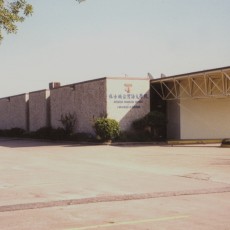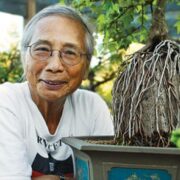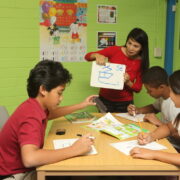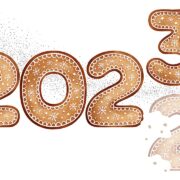Tenth Anniversary of the Taiwanese Community Center’s Opening
Author: Cheng Y. Eddie Chuang
On July 11th of this year (2002) the Taiwanese Community Center (TCC) will celebrate the tenth anniversary of its opening. Eleven years ago, the Taiwanese community utilized a grassroots fundraising approach to gather up enough money to purchase the historic community center. This article is being written in the hopes of giving everyone the opportunity to collectively recall and commemorate the wonderful day when the TCC first opened.
- TCC Building Fund
In 1987, Houston’s real estate market was experiencing a downturn, so many members of the Taiwanese community felt that it was a good time to purchase a building to serve as a community center. However, even though the then-president of the Taiwanese Association of America – Houston Chapter (TAA-HC) Mike Kuo called for action, there was no real progress. In September of the same year, Ya Yen Lee spent a great deal of effort to create a Preparation Committee for the construction of the TCC. The following information about the teams and members of the Preparation Committee has been collected from the 1987 and 1988 issues of the Taiwanese Journal:
Charter Team: Ya Yen Lee, Kuei-fen Hsieh, David Tsay, Chao-Yuh Yang
Secretarial Team: Susan Tsay, Yu-fang Shen, Mike Kuo, Wen-hsiung Li, Lien-shan Wu
Event Team: Chiu-cheng Lin, Ching-nan Ou, S. C. Lee
Program Team: Cheng-hsien Chou, Ming-hsueh Lu, Te-tung Chen
Banquet Team: Chao-Yuh Yang, Ya Yen Lee
Finance Team: Hung-yen Su, Tsan-ho Chen
Real Estate Team: Hsien-tao Chang, Kung-i Hung, Ying-hung Lin, Chen-cheng Wu
Fundraising Team: S. C. Lee, Chao Chen Yang, Ming-te Lin, Jien-Hua Charles Chuang, Tun-cheng Wang
Thanks to the participation of all these members, the Preparation Committee was extremely strong. Susan Tsay reported the results of the second committee meeting, which was held on October 9th. The committee’s work focused on the creation of a committee charter, fundraising methods, property purchase, and the application to become a tax-exempt non-profit organization.
November 7: Raised $428 through a charity sale at the Formosan Association for Public Affairs (FAPA) Torch of Democracy joint event
November 27: The TCC Cup Tennis Tournament
In 1988, there were even more events:
Ya Yen Lee and David Tsay completed the committee charter, and Kung-i Hung found three potential properties, but the negotiations for all three fell through.
February 13: Houston Taiwanese Association of America Annual Meeting – Lottery tickets sold to raise funds for the community center raised a total of $12,000. The lottery was heavily promoted by Ching-nan Ou
February 20: A fundraising ball raised $1200.
March 5: The Houston TAA rented and opened an activity center at 7250 Harwin Drive. The building contained a 2,500 sq. ft. main auditorium and had 7 small rooms. The rental price was $250/month
April 9: At the inauguration ceremony for the activity center, the role of President of TAA Houston was handed over to Ya Yen Lee
April 16: Hsieh Li-fa Oil Painting Charity Auction. Chao Chen Yang, S. C. Lee, Ya Yen Lee and others made purchases. Of the $9,000 raised, half was returned to the activity center.
July Taiwanese Journal: Ya Yen Lee writes, “Taiwanese Activity Center Status Report and Reflection.”
August Taiwanese Journal: “I Love Taiwan” T-shirt Charity Sale produces mediocre results.
October Taiwanese Journal: In the record of the September management meeting, it is mentioned that I introduced the topic of building a community center to the committee. We decided to meet on December 3rd to discuss the project.
As the above information attests to, that entire year Ya Yen Lee dedicated himself to brainstorming and promoting the construction of the community center. It is said that he even went around to the local Taiwanese shops on Harwin Drive to ask for donations like a monk. His dedication to the project is truly admirable.
After drifting around overseas for four years, I returned in September and immediately went to find Ya Yen Lee, who arranged for me to report to the TAA management committee. The strange part is, he never once mentioned the Preparation Committee to me, and never asked me to join. On December 3rd, thirty to forty enthusiastic members of the association participated in the discussion about preparing and construction the community center. The group’s consensus was to first rent a location, and then decide after one or two years of operation whether we should buy the property. In February of 1989, when the preparation committee was to be established, only 4 or 5 association members attended, and thus the project was abandoned.
- Searching for a Location
A year and a half passed. In the fall of 1990, I sent my daughter to the Taiwanese Language School. At the time, the school was using the Forester Elementary School in southern Houston as its building. The members of the Taiwanese school committee felt that constantly having to move locations every two years was extremely bothersome, but everyone felt helpless about the situation. After hearing many disputes, I began to feel that finding a permanent location for the school was more urgent than finding a location for the community center. I felt that it would not be effective to build a preparation committee, so I decided to act alone. After discussing with Ya Yen Lee, I was introduced to Michael Richker, a real estate agent. The following is a list of conditions that I provided to Michael at the time:
- Location: West of Hillcroft, east of Wilcrest, south of Richmond, north of Bissonet
- Price: less than $200,000
- Building: Suitable to be used as a school
- Parking lot: the area must have sufficient parking space that can be borrowed
- Maintenance: the building should not be too old, so that maintenance costs can be reduced
I should also mention, previously when Ya Yen Lee and a group of twenty or thirty other association members were looking to buy a piece of land in Sugar Land, I asked what his opinion was. He said that it was difficult to find a location, that a school was difficult to maintain, and that “far away water can’t be used to put out a nearby fire” (slow solutions can’t be used for urgent problems). He felt that finding a building was extremely urgent. After obtaining his understanding, I put aside my concerns and proceeded.
Since I was unfamiliar with school business, I asked the school principal, Shih-shan Li to be a consultant on the project. He recommended the next principal, Chiu-cheng Lin. We began searching for a location in October. Richker put all his effort into finding a location. Through his introduction, I looked at five different buildings, but none were ideal.
In mid-March of 1991, we found a building that once belonged to a child-care center until they had gone bankrupt. The building felt extremely suitable, and it met all five of my conditions. Listed below is a timeline of the property purchase process:
March 23: Accompanied Chiu-cheng Lin to inspect the building’s interior and felt satisfied with its condition.
April 6: Invited fellow association members, John Chieu, head of the Community Center Building Fund Ya Yen Lee, Lien-shan Wu of the Taiwanese Language School, and Kun-lien Tseng of the Taiwanese American Federal Credit Union to inspect the location’s outdoor environment. When I showed them the building blueprint, all four people felt that it was a good location.
May 8: Invited Lien-shan Wu and Ming Cheng Liau from the Taiwanese Language School, TAA association member Yao-chou Cheng, John Chieu and his wife, Mu-Sheng Wu and his wife, and enthusiastic association members Hung-yen Su and Kuei-fen Hsieh to come inspect the building interior. At the same time, Ying-huai Shen and a Vietnamese electrician went to learn more about the building’s renovation. After the inspection, we all went to Kuei-fen Hsieh’s office to discuss and evaluate the property. We reached the consensus that the building was ideal.
June 14: I wrote a report for the coordination meeting to introduce the building.
From April 26th to July 11th, I attended four TAA management meetings to introduce this building and request a $30,000 subsidy to make the purchase. At first, the directors’ concern was whether or not it would be appropriate to buy such a large building. By the last meeting, however, the result of the vote was five-to-one in favor of granting a no-interest loan of $30,000 to be paid back over ten years.
- The Taiwanese Heritage Society’s Heavy Burden
In September of 1988, the five people who had served as principal to the Taiwanese Language School, Chu-chen Kuo, Yu-fang Shen, Ching-shi Hsieh, Chiu-cheng Lin, and Ming Cheng Liau, with the assistance of Kuei-fen Hsieh as their consultant, applied to make the Taiwanese Heritage Society of Houston (THSH) a tax-exempt non-profit organization. The IRS approved the application mid-January of 1991. This exciting news increased everyone’s confidence in the plan to purchase the new building. Speaking realistically, without the THSH, it’s hard to say how long it would have taken to open a community center. Thus, these five school principals and their consultant were crucial to the process of purchasing the Taiwanese Community Center. On May 10th, the five directors announced the first meeting of the Taiwanese Heritage Society. At the first meeting, held on June 1st, everyone enthusiastically discussed the issue of purchasing the property. The majority of the attendees approved the decision. Seven new directors were elected to serve on a new committee that was authorized to negotiate the property purchase: Chao-Yuh Yang, Sheng-Yi Chuang, Mu-Sheng Wu, Ming Cheng Liau, Ching-shi Hsieh, and Lien-shan Wu. The first committee meeting was held in the afternoon of the very next day, June 2nd, and the decisions made during the meeting were as follows:
- Elected Chao-Yuh Yang to serve as President, and Sheng-Yi Chuang to serve as Vice-president. (After a few months, the two will switch)
- The offer for the building should start at $150,000, and negotiations shouldn’t surpass $200,000.
- The total project budget, including the building cost and renovations, is $250,000
- Fundraising method: Sell shares worth $2,500 and find 100 association and community members to invest in the project by purchasing shares. (Later the committee advocated that the fundraising be used to raise the majority of the funds, while loans should be a secondary method.)
- I was authorized to negotiate the price
- The Negotiation Process
The child-care center was built in 1979 and was renovated and expanded a few years later. It currently houses the offices of the Taiwanese American Federal Credit Union, the Houston Chapter of the Taiwanese Association of America, the Taiwanese Heritage Society of Houston, and the Taiwanese Language School. When the child-care center went bankrupt, the building was taken over by the US government’s Resolution Trust Corporation. Throughout the negotiation process, the THSH held a number of discussion forums, which were all extremely well-attended, and during which morale was very high. Listed below are some important dates:
June 3: Met with two real estate agents to understand the base price of the property
June 14: Officially gave the Earnest Money Contract with the seller with an offer of $145,000
June 23: Decided to raise the offer to $170,000 at the THSH board of directors meeting
June 27: The seller lowered the offer price to $193,000
July 7: A THSH board of directors meeting was held. Fellow association members Yao-chou Cheng and Mike Kuo were invited to attend. Kun-lien Tseng from the Credit Union and Kuei-fen Hsieh were also present. The group agreed to raise the offer to $193,000.
July 17: Ching-shi Hsieh assisted by completing the environmental protection assessment, he did not find any serious hazards.
July 17: The final transaction was completed; the sale price was $195,000.
It took a month to be able to pass this first hurdle, but I didn’t expect that the second hurdle would be even more difficult to pass over. It took twice as much time, and my fighting spirit was worn out. At the start of August, we began negotiations for the Special Warranty Deed. The property was in an area developed by Hines Gerald Interest Group. From the beginning, lawyer Fu-chin Shih was delegated to negotiate the relevant terms of agreement. The staff at Hines intentionally made the transaction difficult by adding two additional restrictions:
- There is a limit of 45 parking spaces
- There is a limit of 12 large-scale activities per year (large-scale refers to events that bring more than 45 vehicles to the location)
In order to resolve the parking issue, I went to talk with the owner of the Indian shop across the street from the center, SARA International. The owner agreed to rent out 55 spaces in his parking lot for $100/month for a term of 5 years. Hines agreed to remove the initial restriction after receiving the parking agreement but continued to refuse to remove the second restriction. On August 19th, Lawyer Shih abandoned negotiations.
I felt as though I was trapped in a dark bottomless pit without a single ray of light, and I was extremely dejected. In the end, however, David Tsay came forward to coordinate the agreement, using his personal relations to lobby Hines, and after five weeks, they finally agreed to lift the second restriction. This project could not have moved forward without David Tsay’s contribution. The revision of the Special Warranty Deed was completed on October 17th. The transfer process was completed on October 28th. Since Chairman Sheng-Yi Chuang could not be present, Vice Chairman Chao-Yuh Yang and I went in his to sign the contract. After this, I was finally able to relax a little, having resolved the issue of finding a building for the Taiwanese school and an event center for the Taiwanese Association. Afterwards, Ya Yen Lee sent me a thank you letter.
At the time of the transfer, we needed $200,000 to purchase the building. Aside from the TCC Building Fund of $40,000 and the TAA-HC loan of $30,000, Ya Yen Lee and Hung-yen Su gave $135,000 to be used as short-term working capital. Thus, thanks to these two behind-the-scenes heroes, we were able to just barely gather the necessary funds.
- Renovation Process
The building was a large-scale, fully-equipped child-care center. The main goal of renovation was to combine three rooms into a large auditorium, and to break up four rooms into eight smaller classrooms. The renovation began on November 11, 1991 and finished on March 31 of the next year. Contractor Ying-huai Shen took responsibility for the majority of the interior work. Other aspects of the project were handled by a large force of volunteers, listed below based on the type of task:
Drafted and applied for renovation license: Ying-hung Lin, Kun-lien Tseng, Chiu-cheng Lin, Chen-yuan Kuo
Connected tap water: Kung-yi Hung
Selected floor tiles: Shu-chin Lien, Sheng-Yi Chuang, Yu-fang Shen, Yi-hsiu Kuo
Interior Design: Yi-hsiu Kuo (Ming-te Kuo’s daughter)
Interior Partitions: Sheng-Yi Chuang, Yu-fang Shen, Yao-chou Cheng, Chih-ying Chen, Yun-hsia Chen, Chung-yu Chuang, Chao-Yuh Yang
Filling swimming pool: J. S. Chien
Auditorium audio equipment: Chiu-cheng Lin, Ching-nan Ou, Kuo-shih Yeh
Indoor cleaning: The Taiwanese Language School mobilized its entire staff of teachers and volunteers to clean the building a total of five times
Outdoor garden arrangement: Chen-yuan Kuo, Su-wei Li, Lien-shan Wu, Wen-shan Wu
Outdoor cleaning: Chui-hsin Yang and Sha-ying Li and his wife hired workers to clean
There were many more volunteers who were involved with a number of various other projects, but as there is no record of them and they cannot be listed individually, please forgive my omission of their names. If you have additional information, please feel free to write to share these other contributions to the project with everyone.
The total renovation cost was $100,000.
- Fundraising Banquet
Once the deal for the TCC building was closed on July 17, 1991, the THSH established a fundraising committee in August. The members of the committee are as follows: Chao-Yuh Yang (convener), Ying-hung Lin, Chiu-cheng Lin, Rung-sheng Lin, John Chieu, Chung-hua Wu, Mike Kuo, Chung-liang Kuo, S. J. Chen, Chung Y. Hsu, Su Hung-yen, Hsiu-e Su, Kun-lien Tseng, Sheng-Yi Chuang, Wen-rung Chueh, Chien-min Tai, Gin Ru Yeh.
After discussing, everyone on the committee agreed that a memorial plaque would be made for each of the individuals who donated more than $10,000, and these would be hung outside of the reception area, the reading room, and the classrooms. The names of donors giving more than $1,000 would be carved together on a large copper plate. Chao-Yuh Yang, Sheng-Yi Chuang, and Chiu-cheng Lin, along with the committee members, put their all into raising funds.
Once the main auditorium was completed and the floor tiles laid, though other renovation projects were still in progress, the THSH decided to through a large-scale fundraising banquet on January 11, 1992. That night was very cold and rainy, but the poor weather didn’t stop over three hundred enthusiastic association members from attending. The entire room was filled with the sound of laughter and a joyous atmosphere. Every attendee felt that they had contributed to the efforts, and thus everyone felt proud and satisfied. As of the writing of this article, a total of $257,600 has been raised, with donations of more than $10,000 from the following individuals: Hung-yen Su, Ya Yen Lee, Chi-yu Chao, Hsien-tao Chang, Feng-chun Huang, S. C. Lee, Tun-cheng Wang, Chung-kuang Lin, Chao Chen Yang, Cheng-ching Huang, Pen-li Wu, the two Chen sisters: Wen-wen Cheng and Shun-shun Cheng, and the three Wu brothers: Tung-shan Wu, Lien-shan Wu, and Wen-shan Wu.
The Taiwanese Language School and Taiwanese American Federal Credit Union each subsidized the renovation costs with payments of $5,000 and $4,400 respectively. There were also tens of people who donated $1,000 and even more donors of smaller amounts. Unfortunately, they cannot all be listed here. By the end of May, a total of $300,000 was raised, which included $40,000 allocated to the TCC Building Fund, and a $30,000 loan from TAA-HC. After the grand opening of the TCC, only a few thousand dollars were left over. It should also be mentioned that after the opening there were a few more individuals who made donations of $10,000 or more.
- TCC Management Committee
In January of 1992, the Taiwan Heritage Society committee approved the creation of a management committee for the TCC. The committee then assigned me to be the first director of the community center. Since the TCC is the shared property of the local Taiwanese community, the committee needed to include representatives various Taiwanese associations. The committee was made up of the following individuals: Chi-yu Chao, representing the Taiwanese Association of America – Houston Chapter; Ping-chuan Tsai, representing the Taiwanese Language School; Wen-hsin Wu, representing the Greater Dallas Chamber of Commerce; David Tsay, representing the Taiwanese American Citizens League; Shou-chang Ou of the Houston Formosan Evergreen Association, and enthusiastic community member Sha-ying Li (originally of the TAA-HC).
The committee’s first meeting was held on February 8th, and the term for all committee members lasted until April 30, 1993. The committee started out by drafting regulations for the committee. The contents of this draft included the duties of each member, the management of the community center, control of expenditures, and the hiring of staff and recruitment of volunteers. After, the committee set rent, created a rental application form, set volunteer shifts, and established a filing system for important document. The Credit Union and Taiwanese School moved into the TCC in February and April respectively, and TAA-HC was also given its own office.
Starting in May, the committee brought on Ms. Tsan-chin Huang as an office clerk, and set office hours to Monday, Friday, and Sunday. At the time, the building was open seven days a week, with the help of the following people: Shih-liang Yeh, Sha-ying Li, Ya-mei Hsiao, Shu-chen Hsiao, Yueh-ho Chen, Shou-ren Kao, Ching-chu Tai, Yao-ming Huang, Wen-shan Wu, Kun-lien Tseng, Su-wei Li, Ying-huai Shen, Kuei-ru Liao, and other volunteers who helped staff the building for 11 months. According to TCC’s financial statement from April until the end of March the following year, the center’s total income was $43,000, and its total expenditure was $40,500. Of the total income, $6,000 came from donations.
As the saying goes, all things are hard before they are easy. Though the cooperation of the committee members, the office clerks, and volunteers, the TCC management committee was gradually able to set a standard for management of the TCC. A year later, the handover to the next committee was very smooth.
- TCC Facilities
The TCC is located in southwestern Houston, just one or two miles from the recently developed Houston Chinatown area. The center’s facilities include:
Property size: 1.12 acres
Parking: 36 spaces
Building: 12,000 sq. ft.
Children’s playground
Large auditorium that seats 250 people
Nine classrooms
Reading Room
Kitchen
Two offices
Two storage rooms
Three Credit Union offices
- Grand Opening Ceremony
The Taiwanese Heritage Society decided to hold the TCC ribbon cutting ceremony on July 11th at 1 pm. That day, all the association members arrived at the ceremony nicely dressed, and there was a joyous atmosphere. Chairman Sheng-Yi Chuang presided over the outdoor ribbon cutting ceremony, and the twelve generous association members that has donated over $10,000 jointly cut the ribbon. Afterwards, the opening ceremony was held inside the center. During the ceremony, Sheng-Yi Chuang praised Chao-Yuh Yang and the other 16 fundraising committee members, Chu-chen Kuo and 7 other people from the Taiwanese Heritage Society, as well as Chi-yu Chao and over 10 other enthusiastic association members. Next, he thanked Chia-tang Lin, who donated the large outdoor sign for the center, and Fei-hu Lin who donated the lighting equipment for the auditorium. The entertainment program was very extravagant, including a lion dance performance by Chin-huang Tsai’s family from Dallas, and a traditional Taiwanese mountain dance performance by Li-hsiung Shih and 10 other performers from New Orleans. The center was filled with joy that day.
Ten years have passed since then, and now that I have the opportunity to look back and reflect, I wonder if the location is appropriate? Is the size of the building large enough? I am incredibly grateful to the three-hundred fellow association members who participated in the purchase of the Taiwanese Community Center Building and made our collective ambition into a reality. I apologize if after reading this article, you didn’t see your name. The most important thing, however, is that I hope that this article can awaken your memories of that wonderful time when the TCC was first created. (Author’s note: Thank you to Sheng-Yi Chuang, Chu-chen Kuo, Ye Chin-ru, and Chiu-cheng Lin for their valuable input and comments during the writing of this article.) July 2002
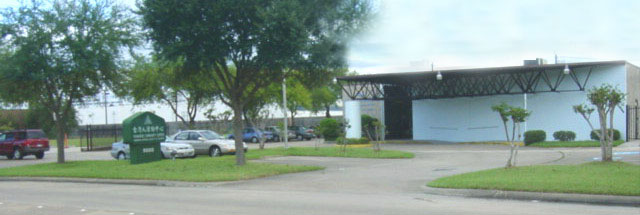
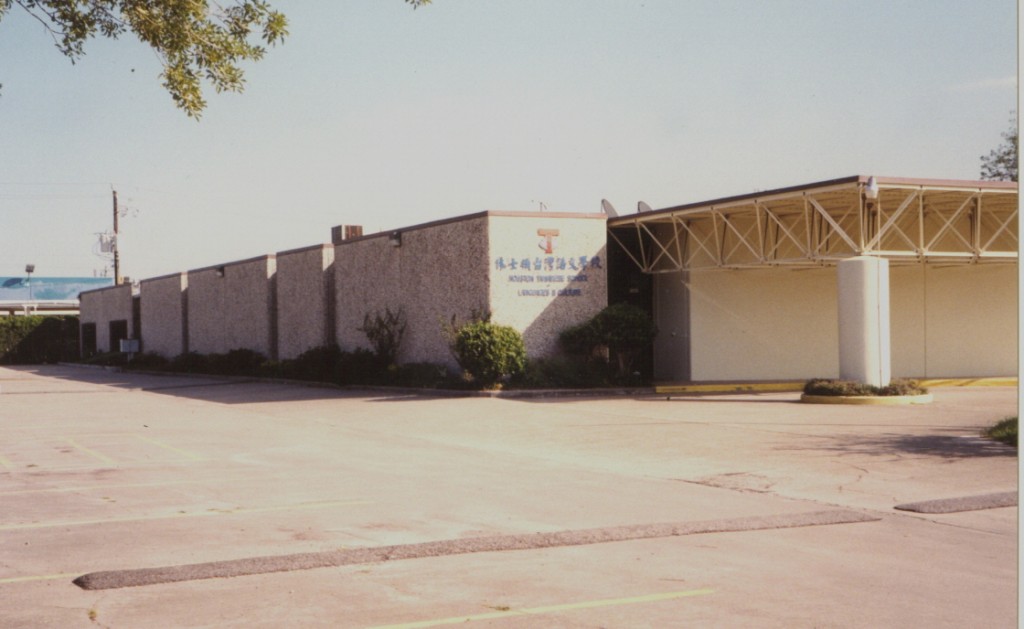
Excerpt from Houston Taiwanese American Journal/ 07/2016
Translated from 233. 回顧休士頓台灣人活動中心的成立 / 莊承業 /07/2016

